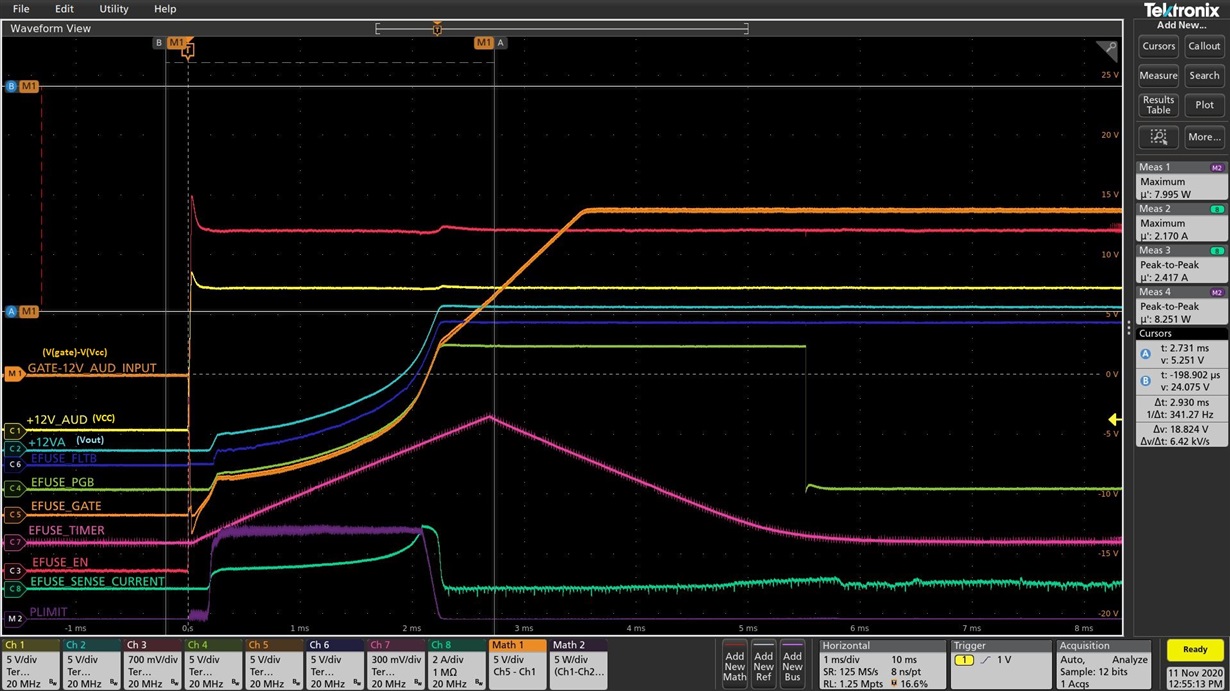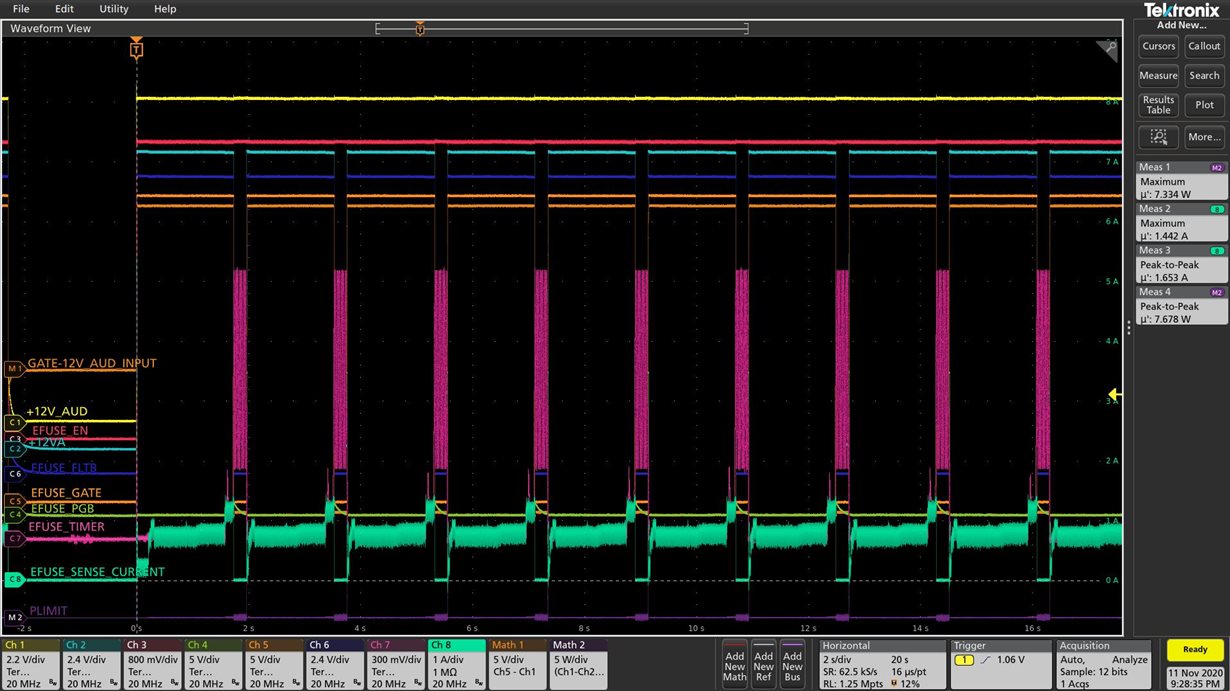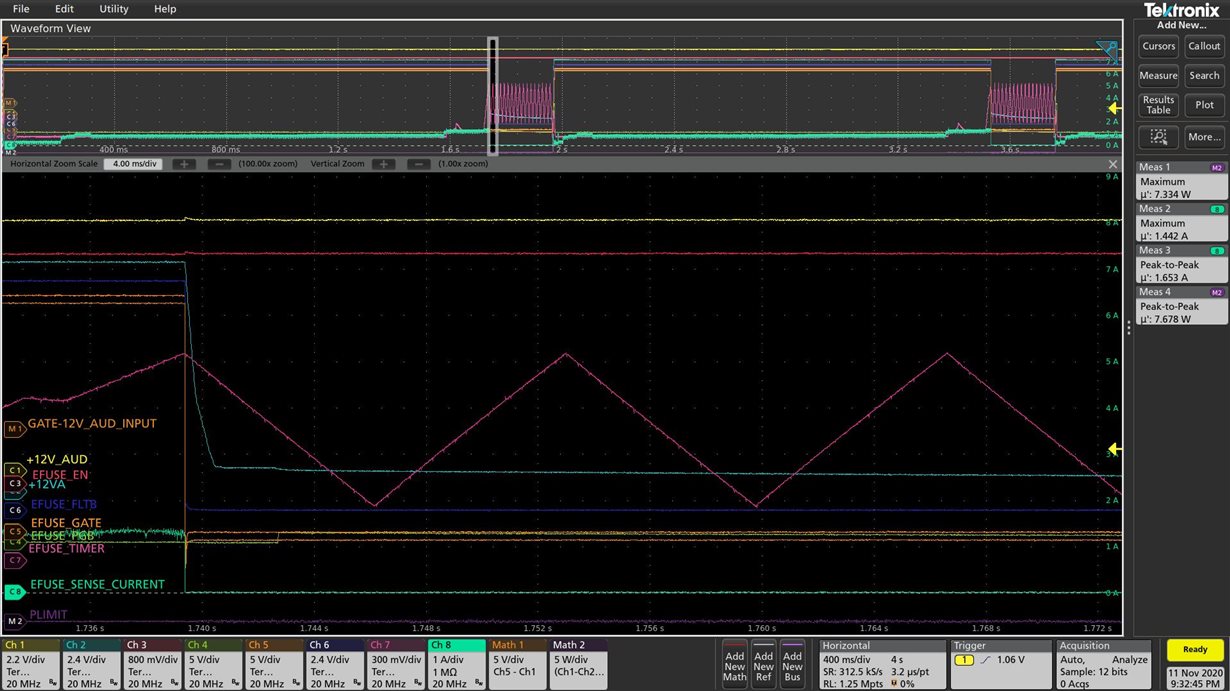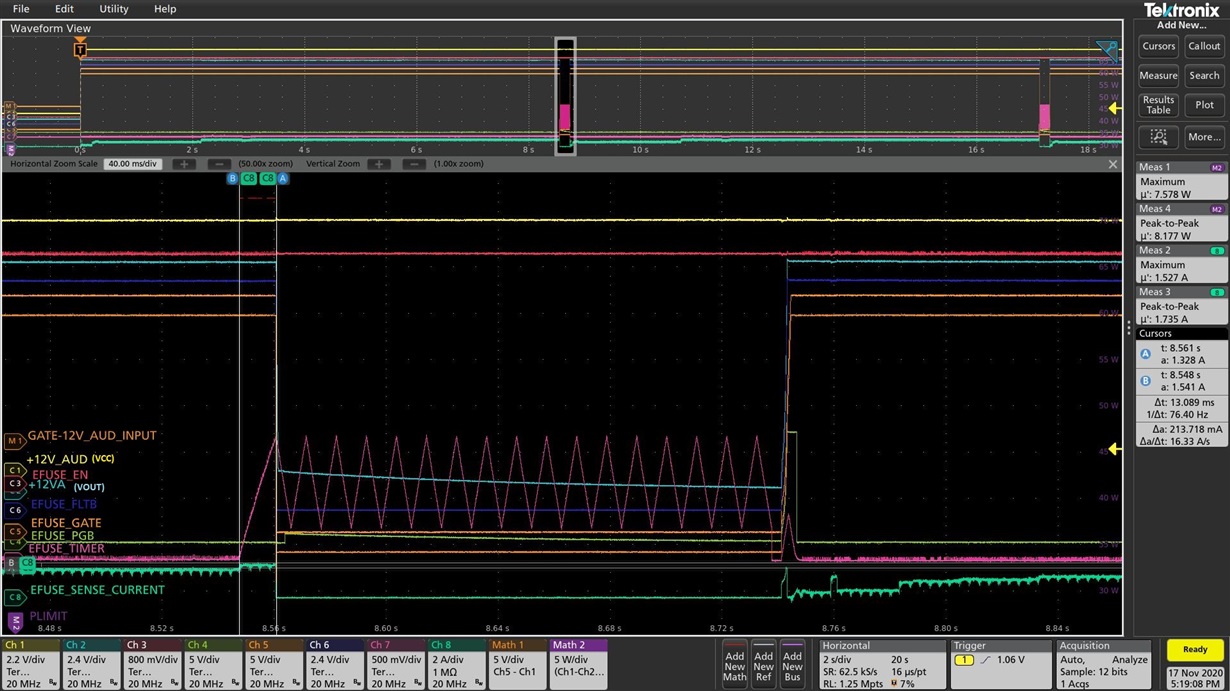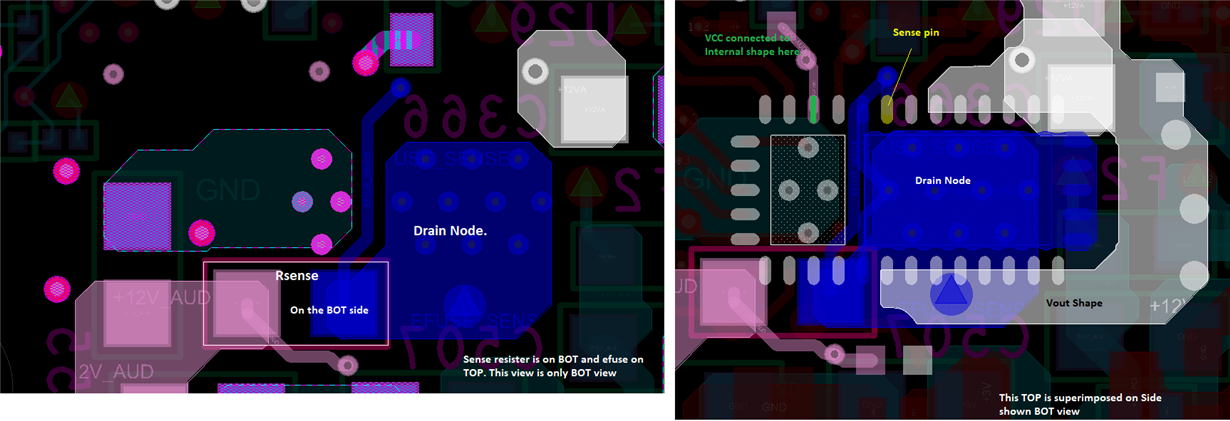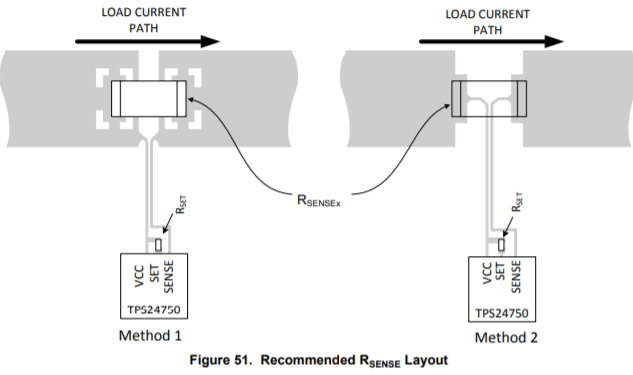Other Parts Discussed in Thread: TPS24750, TPS25982, TPS25980, TPS25750, TPS2595, TPS25947
We are currently using TPS24751 into one of our 75W PCIe ADD-IN card designs.
The design parameters are as follows
Vcc = 12V ± 8% (11.02V to 12.96V)
Current Limit set = 6.5A (actual current limit is 5.5A from specification)
Maximum power dissipation of the card = 75W (12V @ 5.5A).
PLIM = ~22W (internal MOSFET power consumption)
Maximum Output capacitance = 675uF
PLIM specification in efuse is it for Maximum power limit of the Internal MOSFET or Vout * Iout limit.?
Below are the component values selected.
|
SET resister |
61.9 |
Ω |
|
Sense resister |
5 |
mΩ |
|
IMON resister |
1.27 |
kΩ |
|
PROG resister |
37.4 |
kΩ |
|
Timer Capacitor |
47 |
nF |
Below are the limits which we are getting from values chosen
|
Current Limit |
6.5799 |
A |
|
Power Limit |
21.992 |
W |
|
Actual Fault time of our design |
6.345 |
mS |
We are using gate capacitor of 4.7nf+1K for slew rate control. This configuration is tested (Not fully, but boards are booting fine).
Now we are re-designing this to 25W PCIe card. Below are the specifications.
Vcc = 12V ± 8% (11.02V to 12.96V)
Current Limit set = 2.5A (actual current limit is 2.1A from specification)
Maximum power dissipation of the card = 25W (12V @ 2.1A).
PLIM = ~22W (internal MOSFET power consumption)
Maximum Output capacitance = 675uF
|
SET resister |
51.1 |
Ω |
|
Sense resister |
10 |
mΩ |
|
IMON resister |
1.37 |
kΩ |
|
PROG resister |
31.6 |
kΩ |
|
Timer Capacitor |
56 |
nF |
Below are the limits which we are getting from values chosen
|
Current Limit |
2.5177 |
A |
|
Power Limit |
22.008 |
W |
|
Actual Fault time of our design |
7.56 |
mS |
I have few questions on the design.
1. In the 25W card (redesign) always (including inrush) our max current should be ~2.1A. Is the values calculated are fine to have this current limit.
2.With out gate capacitor, with PLIM functionality whether the max current during inrush will exceed 2.1A.
3. If use Rsense as 5mΩ as like old design the Vsns is ~10mV(@2A Iout) which is close to lower limit – Is it OK, or I can use 10mΩ.




